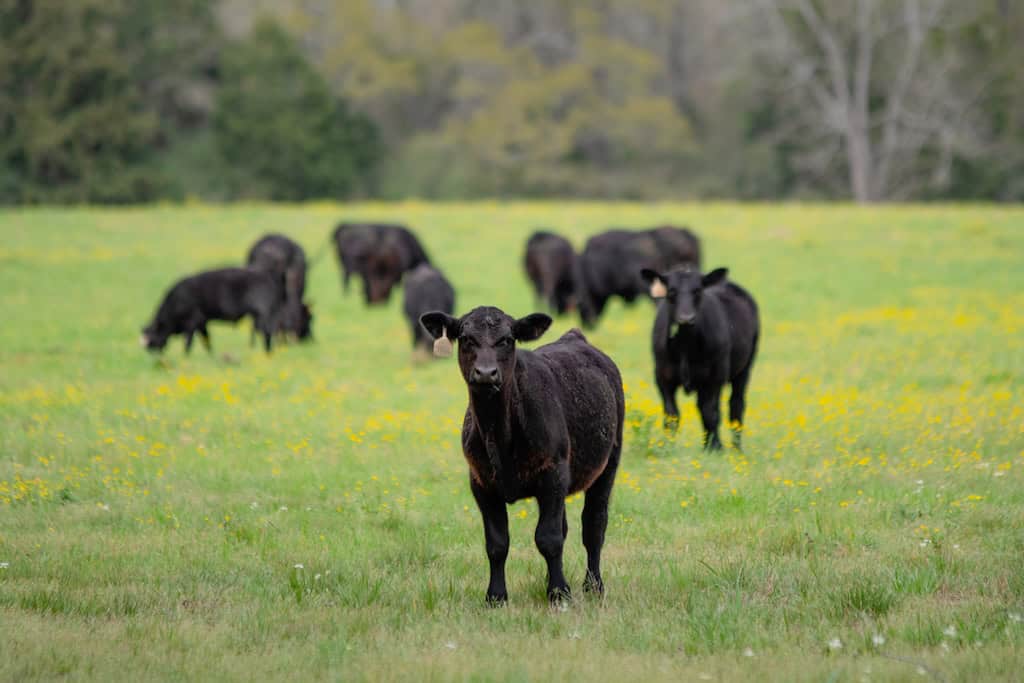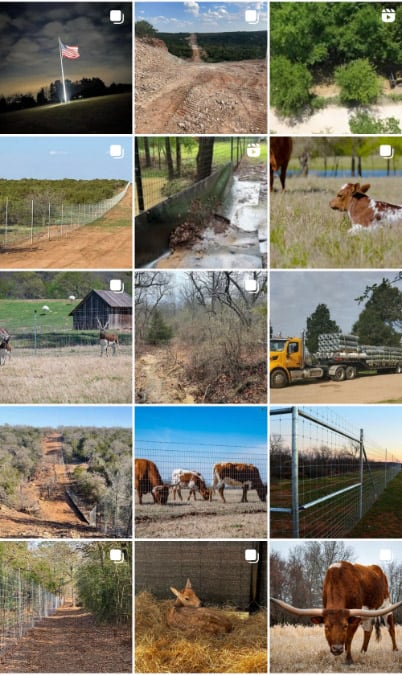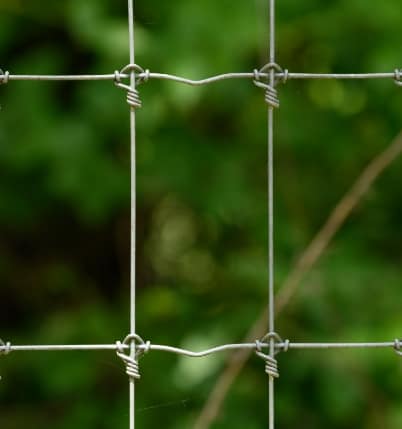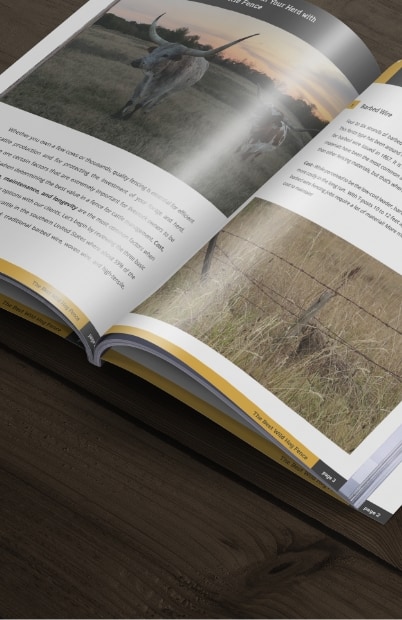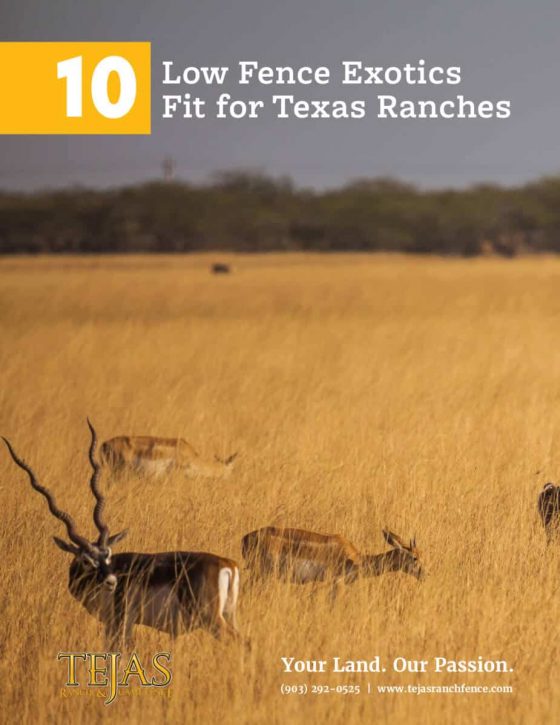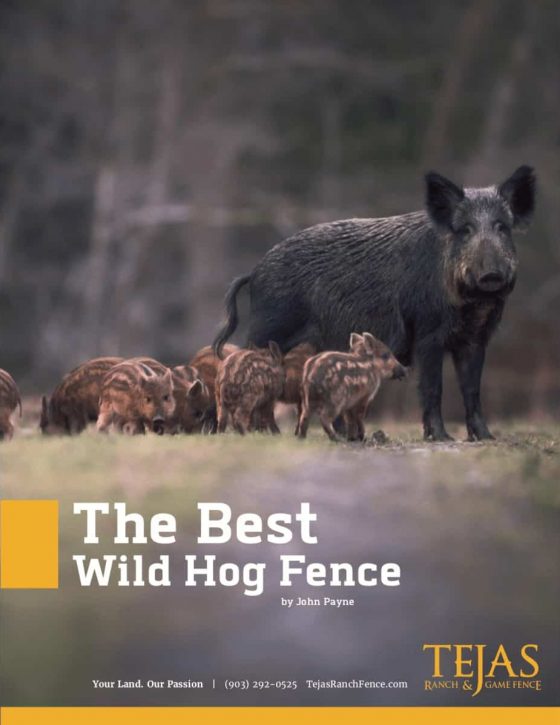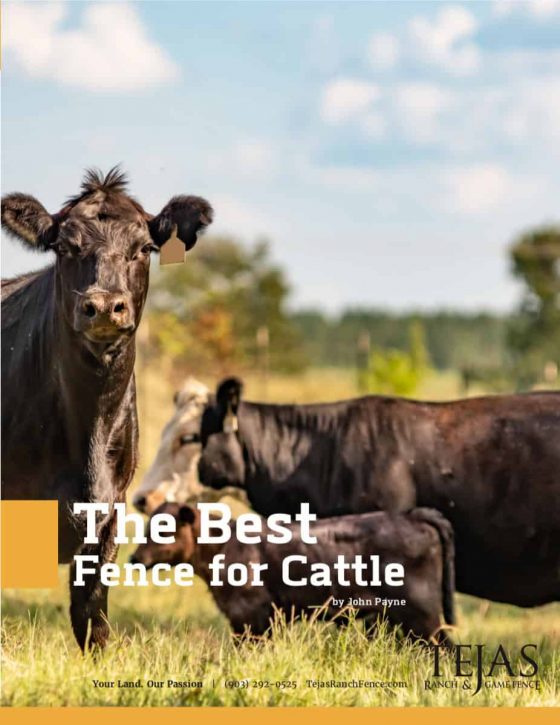An introduction to common cattle breeds in Texas, basic needs for a ranch, and how to raise beef for new Texas landowners.
Texas is a powerhouse in the cattle industry, with ranching forming a cornerstone of its heritage and economy. The state’s varied geography and climate support a diverse range of cattle breeds. Each breed has unique traits for different ranching needs.
Here are the five most common cattle breeds in Texas. Each breed includes details about its average height, weight, looks, and color.
1. Angus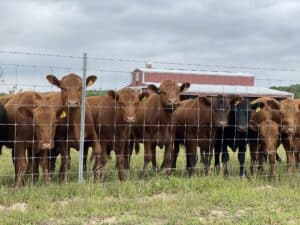
- Average Height and Weight: 4.5–5 feet tall, 1,000–1,300 pounds
- Physical Characteristics: Angus cattle are medium-sized with a muscular, compact build. They are naturally polled (hornless), reducing handling risks. Their efficient feed conversion and high-quality meat make them a top choice for beef production.
- Color: Solid black (Red Angus variants exist but are less common).
Angus cattle are valued for their marbled beef. This beef is known for its great flavor and tenderness. Angus cattle also adapt well to Texas’s changing weather.
2. Hereford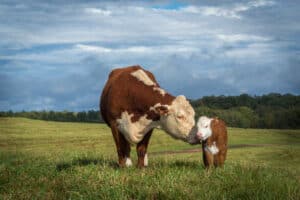
- Average Height and Weight: 4.5–5.5 feet tall, 1,200–1,500 pounds
- Physical Characteristics: Herefords have a stocky frame, broad chest, and strong legs. Their white face and red body are iconic, and their calm demeanor simplifies management. They thrive in tough conditions with minimal care.
- Color: Red body with white face, chest, and legs.
Herefords are hardy and versatile, excelling across Texas’s humid Gulf Coast and dry plains of the Texas Panhandle.
3. Brahman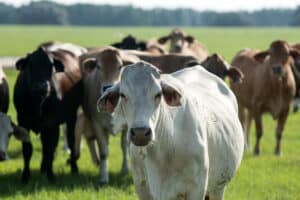
- Average Height and Weight: 5–6 feet tall, up to 2,000 pounds
- Physical Characteristics: Brahmans feature a distinctive hump over their shoulders and loose, wrinkled skin, aiding heat dissipation. Their large, floppy ears and insect resistance suit them to Texas’s southern heat.
- Color: Gray or red, with some variation.
Brahmans are often crossbred for their heat tolerance and durability, making them vital in warmer Texas regions.
4. Longhorn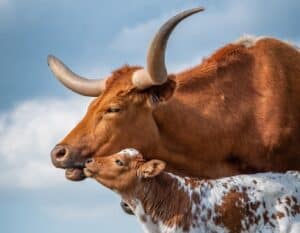
- Average Height and Weight: 4–5 feet tall, 800–1,200 pounds
- Physical Characteristics: Longhorns are lean and athletic, famous for horns that can span up to 7 feet. Their agility and ability to thrive on sparse forage reflect their historical role on Texas’s open ranges.
- Color: Varied—brown, white, red, or speckled.
A symbol of Texas ranching, Longhorns require minimal maintenance and are resistant to common cattle ailments.
5. Beefmaster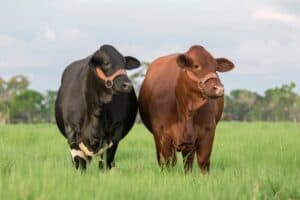
- Average Height and Weight: 5–6 feet tall, up to 2,000 pounds
- Physical Characteristics: A Texas-bred composite breed (Brahman, Hereford, Shorthorn), Beefmasters are muscular, characterized by a deep chest and strong legs. They’re engineered for beef production, with excellent heat tolerance and weight gain.
- Color: Usually red or brown, with variations.
Beefmasters shine in Texas’s hot, dry climate, offering fertility and efficiency for beef-focused ranches.
Raising Cattle in Texas: The Process and Care
Raising the most common cattle breeds in Texas demands knowledge of livestock care and adaptation to the state’s unique environment. From nutrition to fencing, here’s what goes into managing a successful cattle ranch.
Cattle Care Essentials
- Nutrition: Cattle require a balanced mix of forage (such as grass and hay) and supplements (including grains and minerals). Pasture management is key, especially during Texas droughts when grass quality drops.
- Healthcare: Vaccinations, deworming, and regular vet check-ups prevent diseases like bovine respiratory issues. Heat stress monitoring is critical, particularly for less heat-tolerant breeds.
- Environment: Access to shade, clean water, and windbreaks protects cattle from Texas’s extreme summers and occasional harsh winters.
- Predators: For young calves, the protection and safety precautions taken by new landowners will have a direct impact on their survival rate. It starts with ranch fencing. Protecting the perimeter of your ranch with fixed-knot fencing will give you a leg up on predation.
Ranch Fencing Setup
A secure fencing system is non-negotiable for cattle safety, containment, and management. In Texas, common setups include:
- Fence Material: Barbed wire is the most common and affordable, typically with 5–6 strands and posts spaced 10–12 feet apart. The best fence for cattle is high-tensile fixed-knot fencing.
- Electric Fences: Ideal for rotational grazing, these require a reliable power source and less upkeep. If you do not have cross-fencing on your ranch, electric fences can serve as supplemental fencing to rotate cattle among various pastures.
- Gates and Corrals: Sturdy gates and corrals facilitate handling for branding, vaccinating, or transporting. For higher traffic areas, stronger posts, more braces, and tighter high-tensile fixed-knot mesh patterns are required.
Fences must be checked regularly—cattle are strong and curious, and even a minor weakness can lead to escapes or injuries. High-tensile fixed-knot fencing virtually eliminates breaches and weak spots and has the lowest maintenance of all the cattle fence options.
Raising Cattle for Beef Production: The Basic Process
Whether producing beef for your family’s food, raising a small herd for commercial meat, or a large-scale beef production, the process of raising cattle in Texas follows a structured timeline, typically spanning 18–24 months from birth to slaughter. Each stage builds toward market-ready animals.
1. Breeding and Calving
- Timeline: Breeding can be year-round, but spring calving aligns with peak pasture growth (9-month gestation). Timing the breeding of heifers is crucial for Texas ranchers, as it aligns with the hay-growing season, and the heifers have ample grass to feed on, supporting their calves’ growth and development. This, in turn, maximizes calf weight as a herd when they go to auction.
- Process: Cows are bred naturally or artificially. Ranchers monitor calving to assist with difficult births, ensuring calf survival.
2. Weaning
- Timeline: 6–8 months old.
- Process: Calves are separated from their mother cows and transitioned to solid feed, a pivotal step in their independent growth.
3. Growing Stage
- Timeline: Weaning to 12–14 months old.
- Process: Cattle graze on pastures or enter feedlots, gaining weight through forage or supplemented diets. Health management continues.
4. Finishing Stage
- Timeline: Final 3–6 months (up to 18–24 months total).
- Process: A grain-based diet in feedlots boosts marbling and weight (target: 1,000–1,300 pounds). This maximizes beef quality.
5. Slaughter and Processing
- Timeline: 18–24 months old.
- Process: Cattle are transported to slaughter facilities, processed humanely, and the beef is graded and distributed.
Ranchers balance animal welfare, cost, and market demands throughout, tailoring the process to their herd and resources. Any cattleman will tell you that raising beef involves many details. These details are based on years of experience. Getting started serves as the first step to gaining the experience of a seasoned cattleman.
The southern U.S. cattle industry thrives on its common cattle breeds in Texas—Angus, Hereford, Brahman, Longhorn, and Beefmaster—and the expertise of its ranchers. Raising cattle here involves meticulous care, robust fencing, and a clear production timeline. Texas is a leader in raising cattle. It honors the legacy of the Longhorn and improves beef yields through tradition and new ideas.
About Tejas Ranch & Game Fence
Tejas Ranch & Game Fence is the go-to ranch fence contractor for landowners with a vision for their property. We offer a comprehensive range of ranch fence solutions, including high-game fences, cattle fences, hog-proof fences, and more. We offer land clearing, trail construction, and land development consulting, in addition to our fence solutions.
Get in touch with the top cattle fence contractor to start the cattle operation on your Texas ranch. Contact Tejas.
